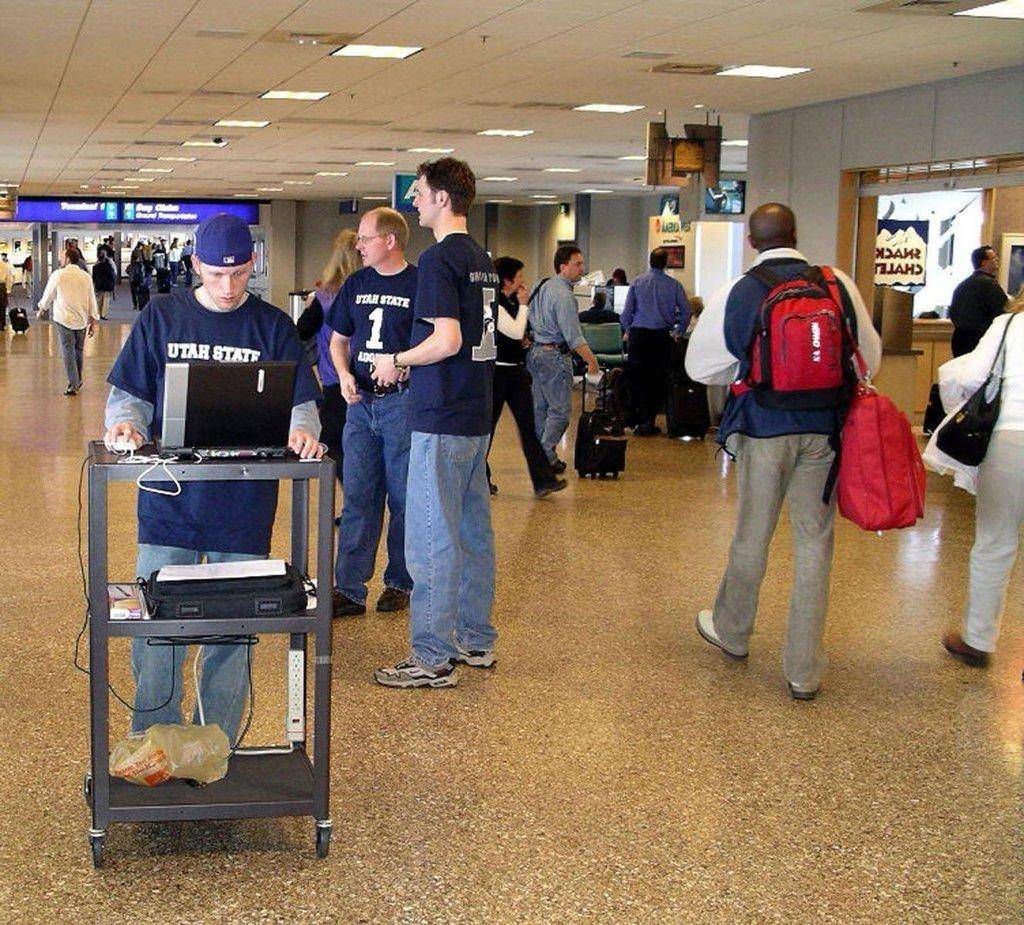A Utah State University project nearly 10 years in the making hit the ground running Oct. 1 with a federal grant of nearly $600,000, which will support a research endeavor aimed at simulating emergency evacuations for those with physical disabilities or stamina impairment.
USU is one of just a few schools in the world undertaking such research, said Keith Christensen, co-principle investigator on the project and assistant professor in Landscape Architecture and Environmental Planning Department. When the project concludes in fall 2013, the team will provide its findings to companies and engineers who create evacuation plans for new buildings around the nation, improving the safety and welfare of those with disabilities.
“I am very excited with this opportunity,” said Yong Seog Kim, a co-PI and associate professor in USU’s Jon M. Huntsman School of Business who will manage the project’s data. “I truly believe the outcomes of this research will make our communities a better place to live for people with and without disabilities.”
John Johnson, head of USU’s Management Information Systems Department, said that Kim is uniquely qualified to contribute to this research.
“He develops software that can mimic human characteristics and demonstrate what people would do in a real emergency,” Johnson said. “Just like computer games have characters who react to the choices players make, computer agents in a simulation can react to an emergency just as real people would, giving researches vital information they need in order to draw informed conclusions and make valid recommendations.”
The project is designed around measuring pedestrian behavior in normal circumstances as well as evacuation environments. The team will then look at how those with disabilities walk, the speed at which they move and how they react when put in close contact with others.
The research includes two parts. The first phase measures the behavior of pedestrians with mobility-related disabilities in controlled environments. The second phase measures evacuation behavior data of individuals with mobility-related disabilities in realistic evacuation environments. Throughout the project, the team will use military-grade equipment, including radio frequency identification and video tracking to catch and observe the exact movement of pedestrians.
“We’re working very hard to seek new opportunities and funds to capitalize on this significant grant,” said Anthony Chen, a co-PI and professor in the Department of Civil and Environmental Engineering.
Chen’s research in transportation models helps with studying human movement for the project.
When a building is constructed, engineers create an evacuation plan for pedestrians in case of an emergency, such as an earthquake, fire or flood. These evacuation plans are generally designed for a standard pedestrian, not those with disabilities. Nearly 17 percent of the population in the United States has some type of disability, and these plans don’t consider to them.
Christensen has been working on a computer model since the early 2000s that can predict how the standard person will evacuate a building in an emergency. When the project is finished, he will input the data into the model for a fuller picture of how those with disabilities fare in an emergency situation.
“We want safer environments for people with disabilities,” Christensen said. “When they’re not included, they’re not thought about.”
The project is a multidisciplinary effort between Utah State University’s College of Agriculture, College of Engineering, Jon M. Huntsman School of Business and three of the university’s research centers — the Center for Persons with Disabilities, Center for Self-Organizing and Intelligent Systems and the Utah Transportation Center.
The grant was awarded by the National Institute on Disability and Rehabilitation Research and will support three graduate students over the next three years. For more information, contact Christensen at 435-797-0507.

